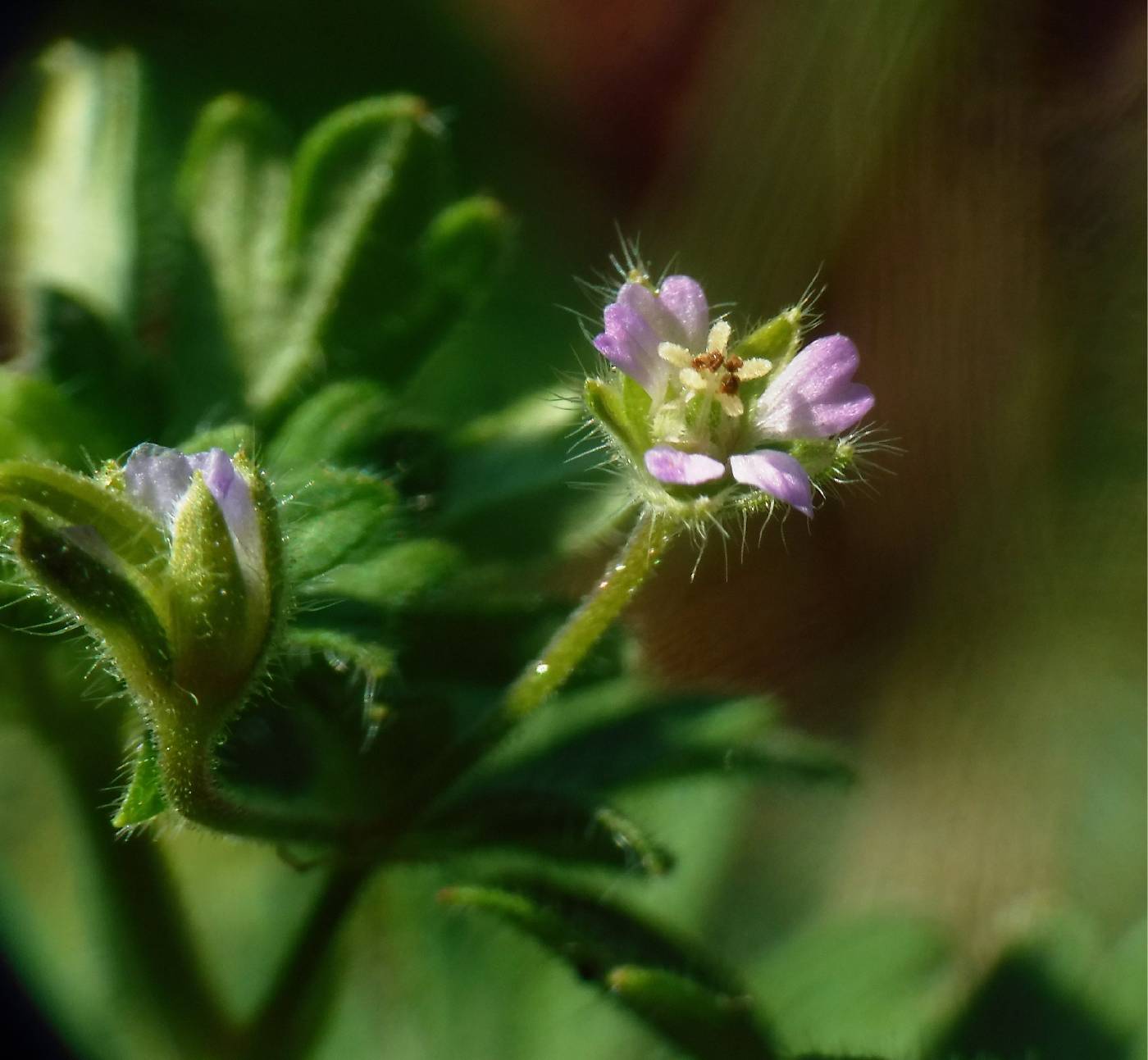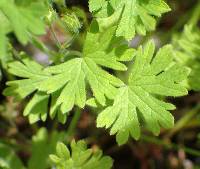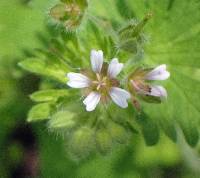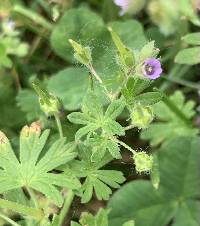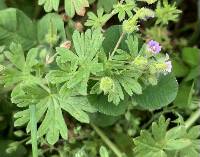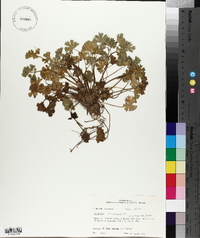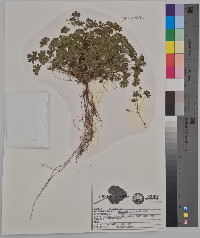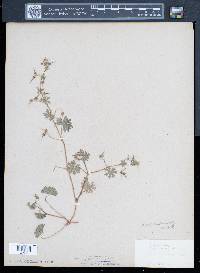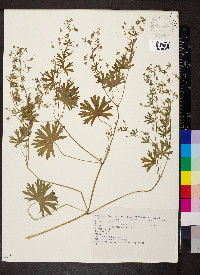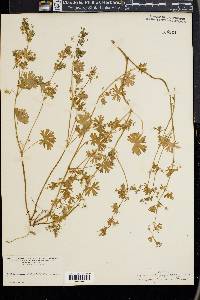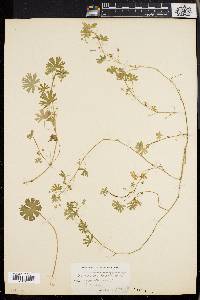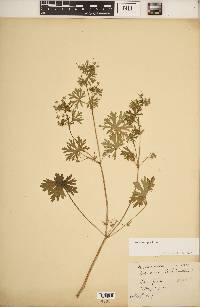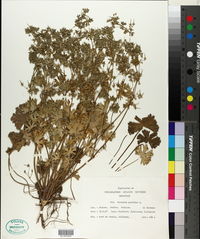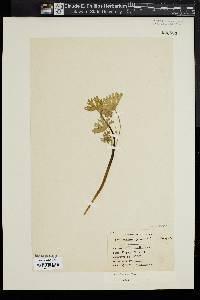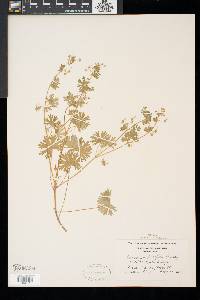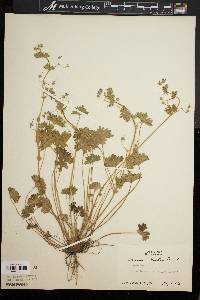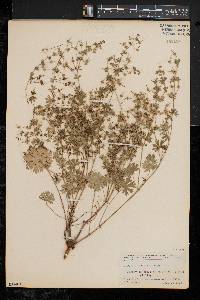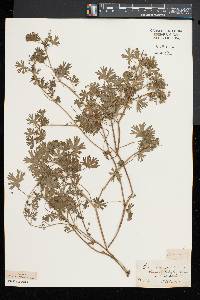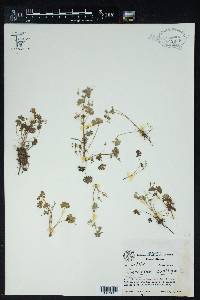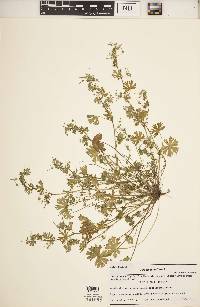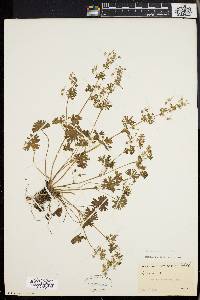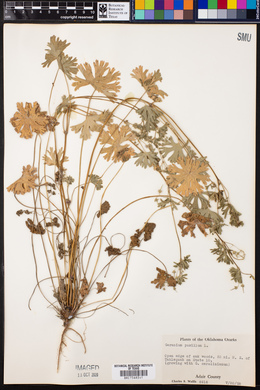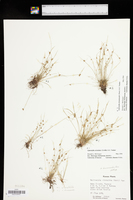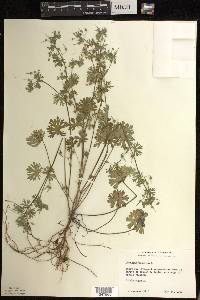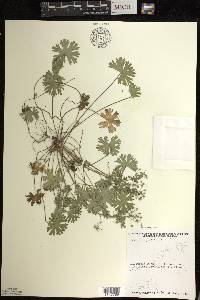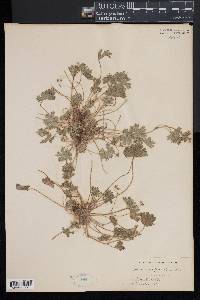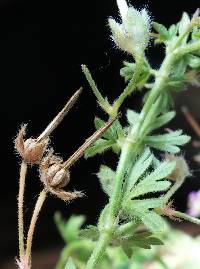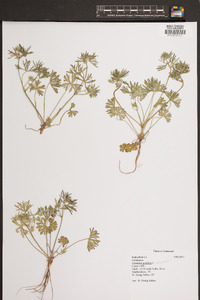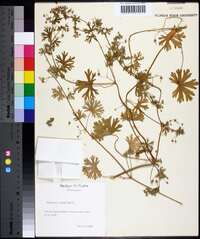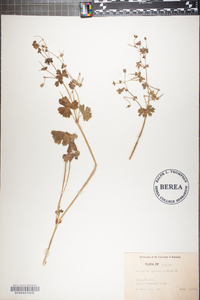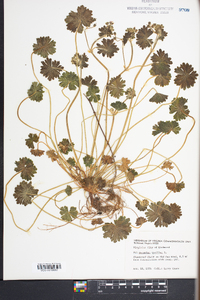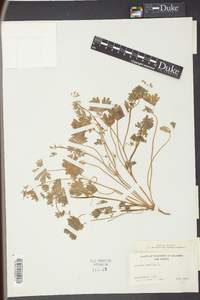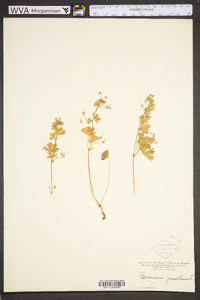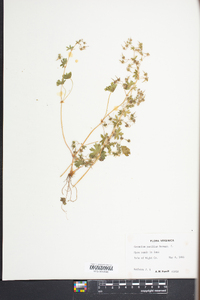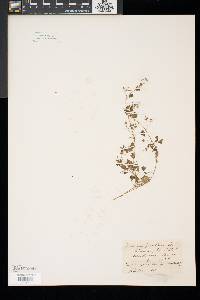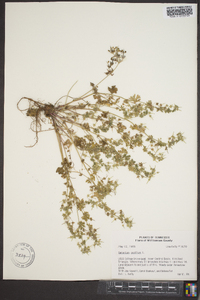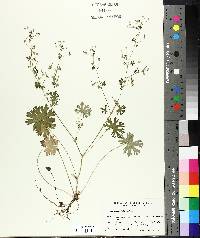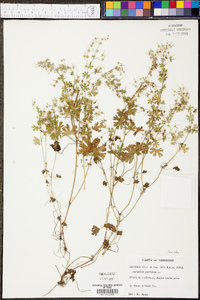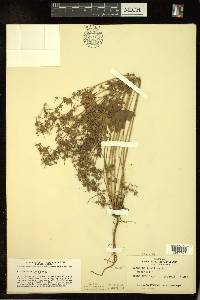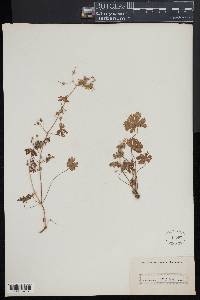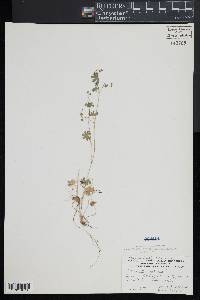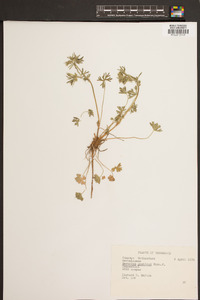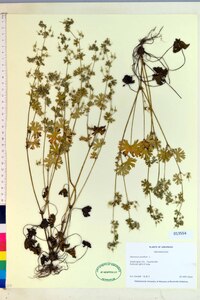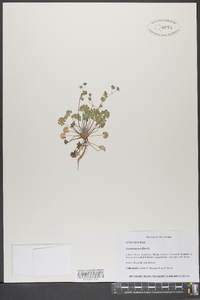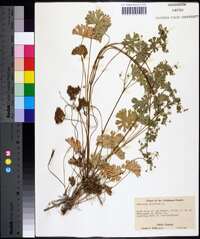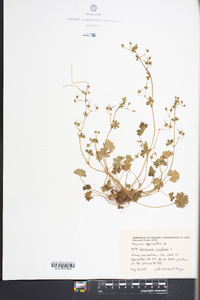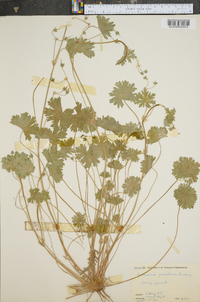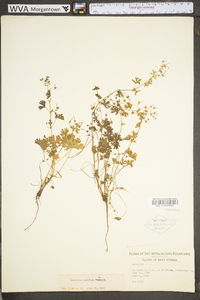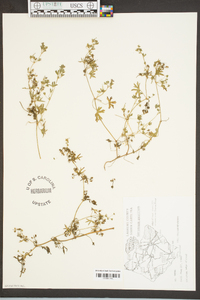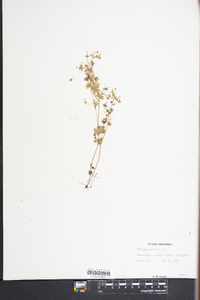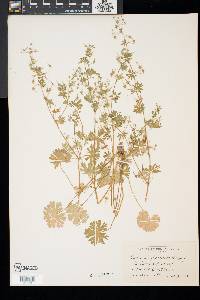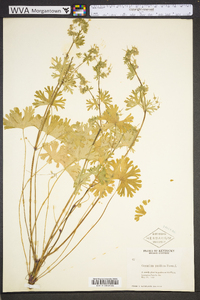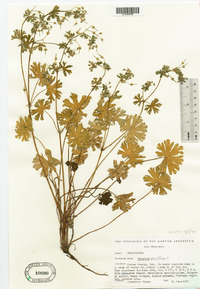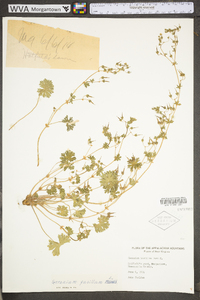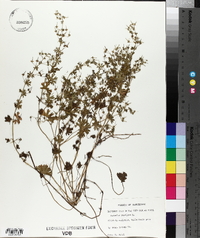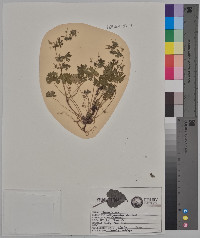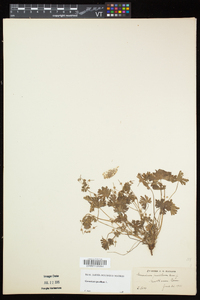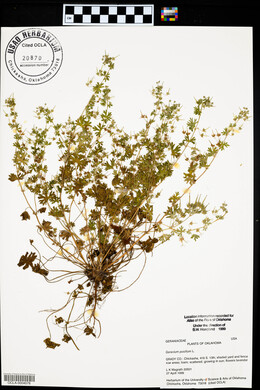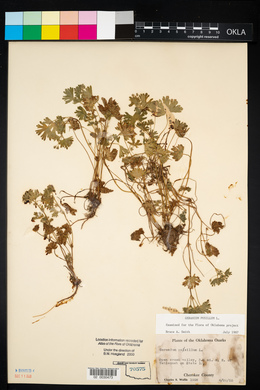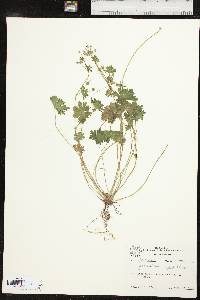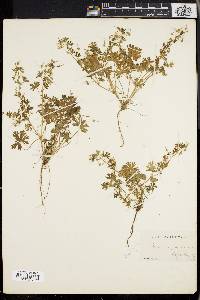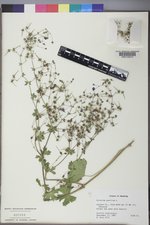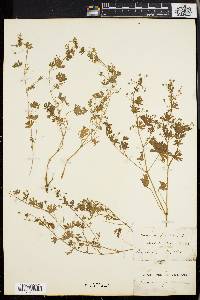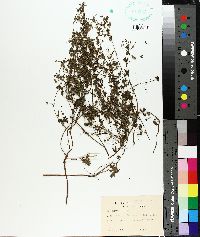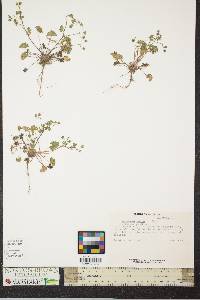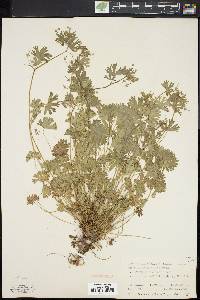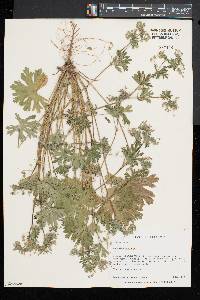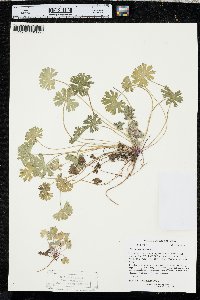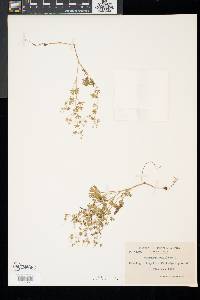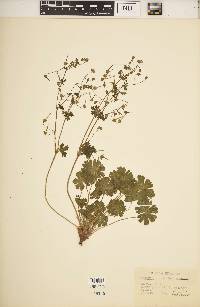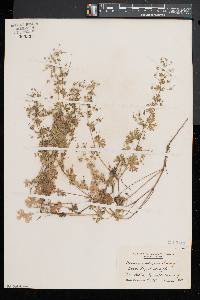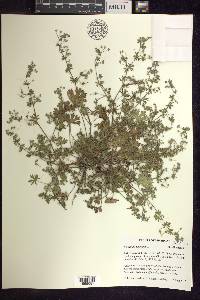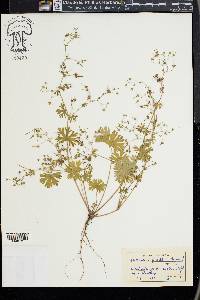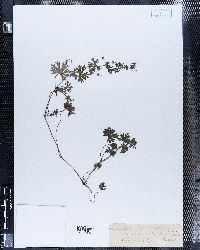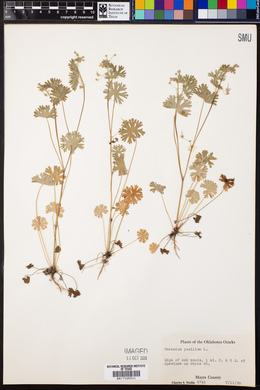Geranium pusillum
|
|
|
|
Family: Geraniaceae
Small-Flower Crane's-Bill, more...small geranium
|
Annual or biennial herb 10 - 50 cm tall Stem: diffusely branched, spreading or ascending, and covered with short gland-tipped hairs. Leaves: basal and opposite along stem, long-stalked, 3 - 6 cm wide, somewhat rounded or kidney-shaped in outline, but deeply palmately seven- to nine-lobed, with lobes narrowed at base and further palmately lobed near tips. The stem leaves are similar in shape to the basal leaves, but smaller and reducing in size up the stem. Flowers: pale lilac, small (about 1 cm diameter), radially symmetric, and atop relatively long (over twice length of sepals), densely glandular-hairy, axillary stalks. Sepals: five, alternate with petals, green, stiff-hairy (especially at edges), 2.5 - 4 mm long, somewhat pointed at tip but without an apical bristle. Petals: five, pale lilac, a bit longer than sepals, but under 5 mm long, narrower at base, and notched at center of tip. Stamens: ten in two series, but only the inner five fertile and possessing anthers (up to 1 mm long), the outer five stamens sterile and lacking anthers. Pistil: with a single, deeply five-lobed, superior ovary; one elongated style column; and five linear stigmas. Fruit: five, erect, sparsely appressed-hairy, 0.9 - 1.2 cm long, single-seeded, rounded base, beaked, nutlike segments surrounding remnant elongated style column of each flower. Each nutlike segment has an extremely short (or none) narrowed beak at its tip, which is attached to the lower part of the style column, and then is pulled upwards by the coiling outer wall of the style column, yet stays attached to the entire fruiting structure and ejects the seed from the main body of the nutlike segment. Similar species: Geranium pusillum is probably most similar to G. molle, but that species has long, spreading hairs intermixed with short glandular hairs on its stems; ten fertile stamens (as in other species); and a hairless fruit. Our other species either have bristle-tipped sepals, larger flowers, or flower stalks longer than twice the length of the sepals. Flowering: late May to September Habitat and ecology: Introduced from Europe, occasionally escaping into disturbed sands of our eastern and southern sectors, as well as in sandy lawns, especially those with high nitrogen concentrations. Occurence in the Chicago region: non-native Author: The Field Museum Diffusely branched annual or biennial, spreading or ascending, to 5 dm; basal lvs long-petioled, the rotund, 3-6 cm blade deeply 7-9-cleft with cuneate divisions palmately lobed at the summit; upper lvs progressively reduced; fls numerous on densely but minutely glandular pedicels; sep acute or shortly mucronate, 2.5-4 mm at anthesis, ±hirsute, especially at the margins, nearly as long as the retuse pet; 3-5 outer stamens lacking anthers; fr, including the cal, 9-12 mm, the stylar beak very short or none, the carpel-bodies strigillose, not wrinkled; seeds smooth; 2n=26. Native of Europe, established as a weed in fields and waste places from N. Engl. to B.C., s. to N.C., Ark., and Oreg. All summer. Gleason, Henry A. & Cronquist, Arthur J. 1991. Manual of vascular plants of northeastern United States and adjacent Canada. lxxv + 910 pp. ©The New York Botanical Garden. All rights reserved. Used by permission. From Flora of Indiana (1940) by Charles C. Deam This species was found as a weed in 1902 on the grounds of Purdue University Agricultural Experiment Station, and in 1905 Wilson says: "Appears to be well established and spreading, exterminating the grass." It was found also, in 1935, well established in a lawn about one and a half miles northwest of Bluffton, Wells County. Specimens from La Porte and St. Joseph Counties have been collected by Nieuwland. ...... Indiana Coefficient of Conservatism: C = null, non-native Wetland Indicator Status: N/A |

